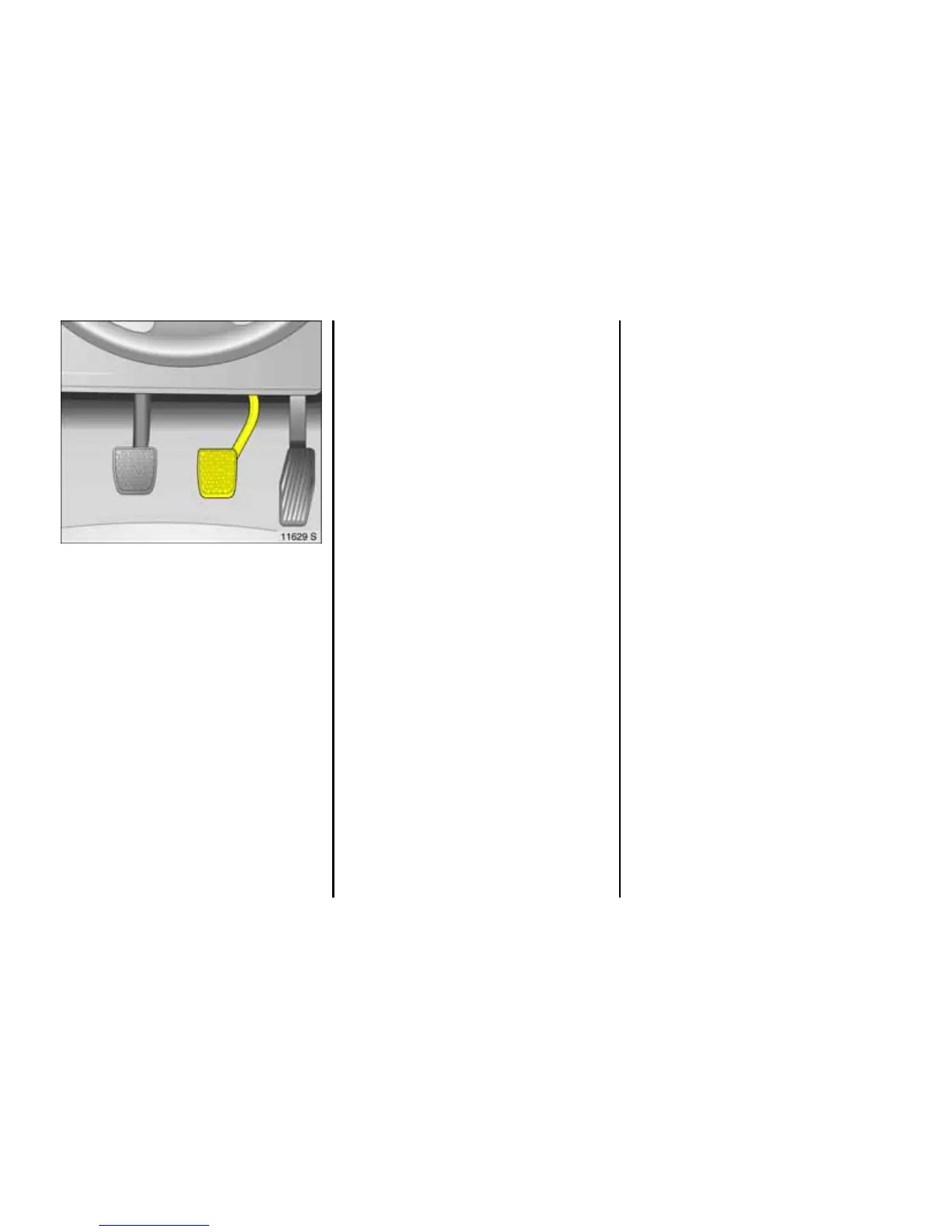15 7
Brak e assist
W hen the brake peda l is q uick ly and
forcefully de pres sed, the ve hicle is
automatically braked with ma ximum b ra ke
force a mplification in order to obtain the
shortest possib le braking distance during
full-on bra king (brake assist).
Maintain s teady pres sure on the brak e
pedal for as long as full-on brak ing is to
continue . W h en the brake ped al is
released, the max imum brake force
amp lification is taken away.
Foot brake
The foot brake comprises two independent
brake circuits.
If a brake circuit fails, the vehicle can still be
braked using the other brake circuit. If this
oc curs, however, the brake pedal m ust be
depressed quite far using considerable
force before braking effect occurs. The
distance required for braking will b e
greater. Consult a workshop before
continuing your journey. We recommend
your Vauxhall Authorised Repairer.
To ensure the full pedal travel can be
utilized, esp ecially in c ase of a fault in one
of the brake circuits, there must be no mats
in the vicinity of the pedals – see page 138.
When the engine is not running, the
support of the brak e servo unit disap pears
once the brake pedal has been depressed
once or twice. Braking effect is not
reduc ed, but braking requires signific antly
greater force. This is especially im portant
to be ar in mind w hen towing .
Check the brake lights before starting out
on a journey.
Shortly a fter starting each journey the
e ffe ctivene ss of the brake sy ste m s hould
be tested at low speed and without
inconveniencing other traffic, especially if
the brakes are wet, e.g. a fter the v ehicle
has been washed.
The brake fluid level should be checked
regula rly . If the brake fluid level is too low
and the ha nd brake is not applied, control
indicator R on the instrum ent panel
illuminates – see p age 32.

